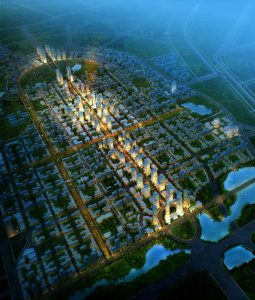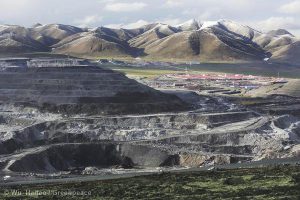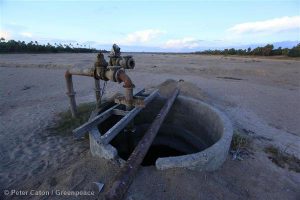When the newest iPhone – and its distressing tendency to bend – receives far more attention than any car has in recent memory, it may seem that this larger “gadget” of ours has lost its position as an icon of modernity, overtaken by our focus on the next thing we can carry around in our pocket. While car ads still grace our TV screens constantly and new models continue to be released every year, we get the sense that the fundamental features of our basic mode of transportation are fairly static. But is that really what we should expect?
To some, the concept of driverless cars may seem as remote an idea as flying ones. Others may have noticed Google’s Self Driving Car while watching “The Internship”, but dismissed it as some newfangled prototype that wouldn’t be hitting the market anytime soon – even within their lifetime.
In reality, though, the transportation, technological and media worlds have been abuzz with the very real concept of driverless cars. Most major automakers are working on prototypes, with some already including transitional features such as self-parking. The industry has reined in its wilder predictions, but well-tested prototypes should be ready within three to five years. Large-scale field testing is likely during the next decade, leading – if successful – to zones within cities where driverless cars are permitted.
Technological, privacy and security considerations regarding such vehicles have been extensively discussed in the media and elsewhere. However, there has been relatively little discussion of how driverless vehicles might impact our lifestyles and behaviour – and what the implications would be for safety, traffic congestion, pollution, urban design and energy consumption. While these implications may not be known with certainty for a couple of decades, based on past studies, we are able to identify possible human behaviour responses.
Urban sprawl?
For example, people may live farther from workplaces, as commuting may become less of an issue of “getting stuck in traffic” and more of a chance to enjoy quality time in our “private cocoons”. Such impacts challenge current notions in real estate and urban planning that “location, location, location” is key. With less premium attached to location, travel time would not impact land value. Perhaps our cities will sprawl further, leading to higher car dependency, lower public transportation use and less walking and cycling.
Furthermore, relieved of the burden of having to focus on the road and only the road, we might want to relax during our commute, and therefore acquire larger vehicles with more comfort-oriented amenities – impacting roadway processing capacity. At the most extreme, imagine recreational vehicles being increasingly used for urban travel, and/or geographically-locked homes being swapped for comfortable mobile homes (perhaps comparable to the shift from land-lines to mobile phones).
And what happens to public transportation? Private cars provide privacy and flexibility, but you better not text while driving. On a bus or train, you can catch up with news or text friends, but are surrounded by strangers and on someone else’s schedule. Driverless vehicles could be viewed as the best of both worlds. Would there be any point, then, to investing in public transportation?
But before we label driverless cars as an unwelcome technology and dismantle plans for public transportation investments, we must consider the other side of driverless car impacts.
Possible safety benefits
Driverless cars could change the paradigm of vehicle ownership. In the most extreme scenario, nobody would own a vehicle but rather would use driverless car-sharing enterprises. This could cut out low volume public transportation routes, helping enhance services on high volume ones. With each vehicle parked less, the need for parking places – which account for a third of land-area in some cities – would be substantially reduced.
From a safety standpoint, taking driving control away from individuals should reduce crashes, as human errors and drunk driving are estimated to cause over 90% of accidents. From an enhanced accessibility standpoint, people who are often unable to drive – such as the elderly, disabled and children – would be more mobile, reducing social exclusion.
In addition, driverless cars and accurate road positioning could decrease the distance between cars, allowing platooning, increased travel lane capacity, decreased lane width, fewer delays and improved travel reliability (though reductions in congestion and delays might engender more travel, offsetting some of the benefits). Processing vehicles at intersections as cars arrive rather than using traditional stop lights could also decrease wait-time. Further, commercial vehicle operations could be pursued during off-peak and night times, reducing pressure on urban highways and speeding up commutes.
Of course, this transition to a completely driverless world will not happen overnight – if at all. We can expect perhaps three or more decades of mixed human driven and driverless cars, with all the safety, security and privacy issues that entails. But governments and transportation agencies need to be thinking forward, anticipating potentially unintended consequences and formulating policies accordingly.
Policy foresight needed
In doing so, larger societal issues need to be on the radar. For example, in the United States alone, there are nearly 5 million commercial drivers who would need retraining for other professions. Similarly, transportation education would need to prepare a next generation workforce that appreciates the uncertainties, challenges and excitement facing the profession in the coming years.
So, will driverless cars be the panacea to address all safety, congestion, pollution and energy consumption problems? Unfortunately not. And we certainly cannot get complacent and stop investing in other tools to manage and reduce traffic congestion. Rather, this new disruptive technology should be viewed as a welcome and substantial addition to the professionals’ and policymakers’ toolbox.
In short, a lot of issues have to be thought through. This is not simply a matter of the technology or the physical infrastructure but also – and perhaps even more importantly – how people will embrace this new technology and use it to shape their daily lives.







